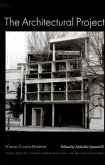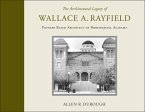Atlee B. Ayres was one of the most prominent Texas architects of the early twentieth century. In a career spanning more than seventy years, Ayres was involved in more than five hundred architectural projects, principally in San Antonio and South Texas, but also in Kansas, Oklahoma, and New York. His architectural successes include distinguished public buildings such as San Antonio's first skyscraper, the Smith Young Tower; private homes; businesses and churches; and five buildings on the campus of the University of Texas at Austin. However, it was in the houses he designed that the influences of the refined eclecticism for which Ayres became known are most evident. In The Eclectic Odyssey of Atlee B. Ayres, Architect, Robert James Coote focuses on Ayres's early-twentieth-century residential architecture and the sources from which he drew inspiration. During the three decades Coote examines, Ayres designed nearly two hundred homes in the fashionable San Antonio suburbs of Monte Vista, Olmos Park, and Terrell Hills -- homes that even now rank among the most charming in the area. Ayres's eclectic search for inspiration and guidance from buildings of many times and places, American and European, provides a window on the issue of style -- an issue that continues to interest those who design houses as well as those who experience them. Coote studies in detail twenty-five of Ayres's houses, not only as representatives of styles, but also as architectural compositions -- their plans, spaces, exteriors, materials, and structure. Coote has mined an extraordinary collection of drawings, specifications, office correspondence, and photographs to write about an important architect and theinfluences that made him both an exemplar of his times and an unusually fine practitioner of eclecticism.








